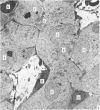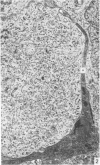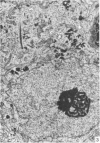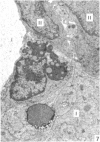Abstract
The ultrastructure of the rat pineal gland was studied from 75 days until 10 months of age. Type I pinealocytes of young adults showed nuclei with dispersed chromatin, numerous infoldings of the nuclear envelope and well developed nucleoli. The cytoplasm displayed many mitochondria and clusters of smooth endoplasmic reticulum. With increasing age, there was a clear increase in the number of dense bodies or lysosomes in the Type I pinealocyte. The changes in the Type II pinealocytes with age were mainly in nuclear shape and in the appearance of lipofuscin granules.
Full text
PDF
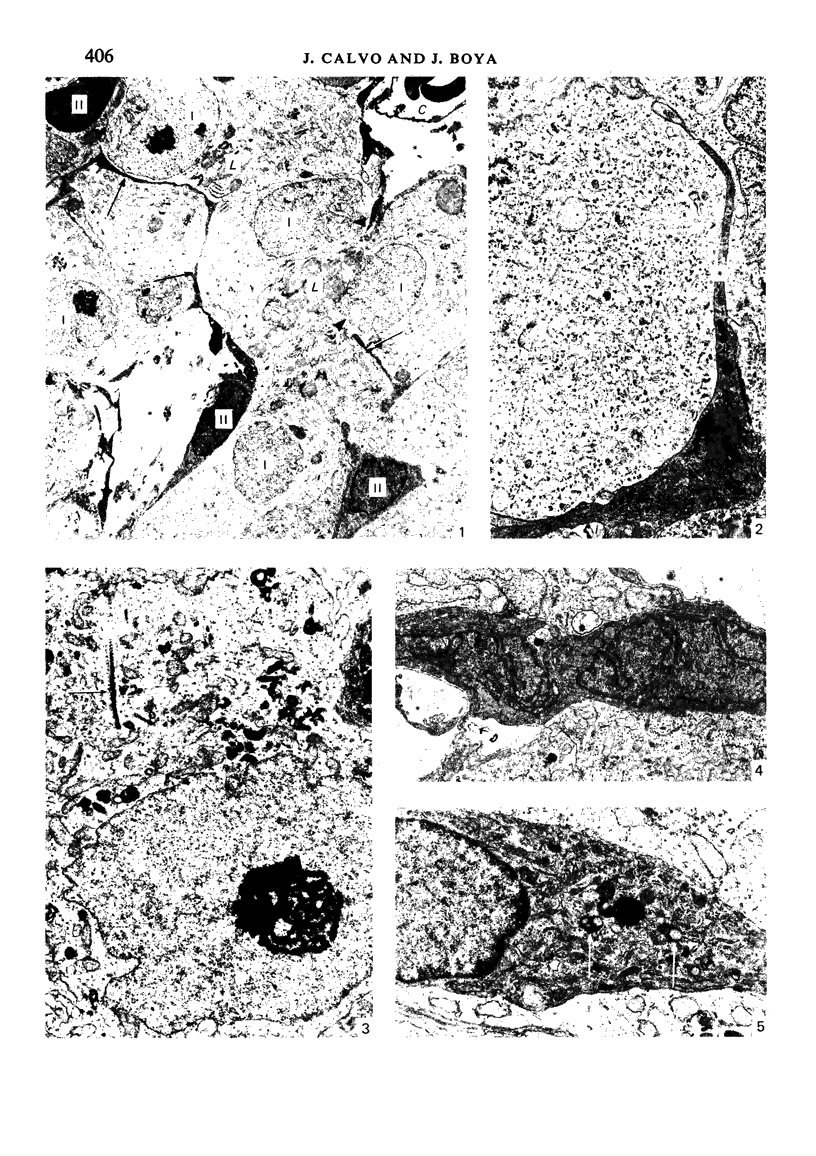
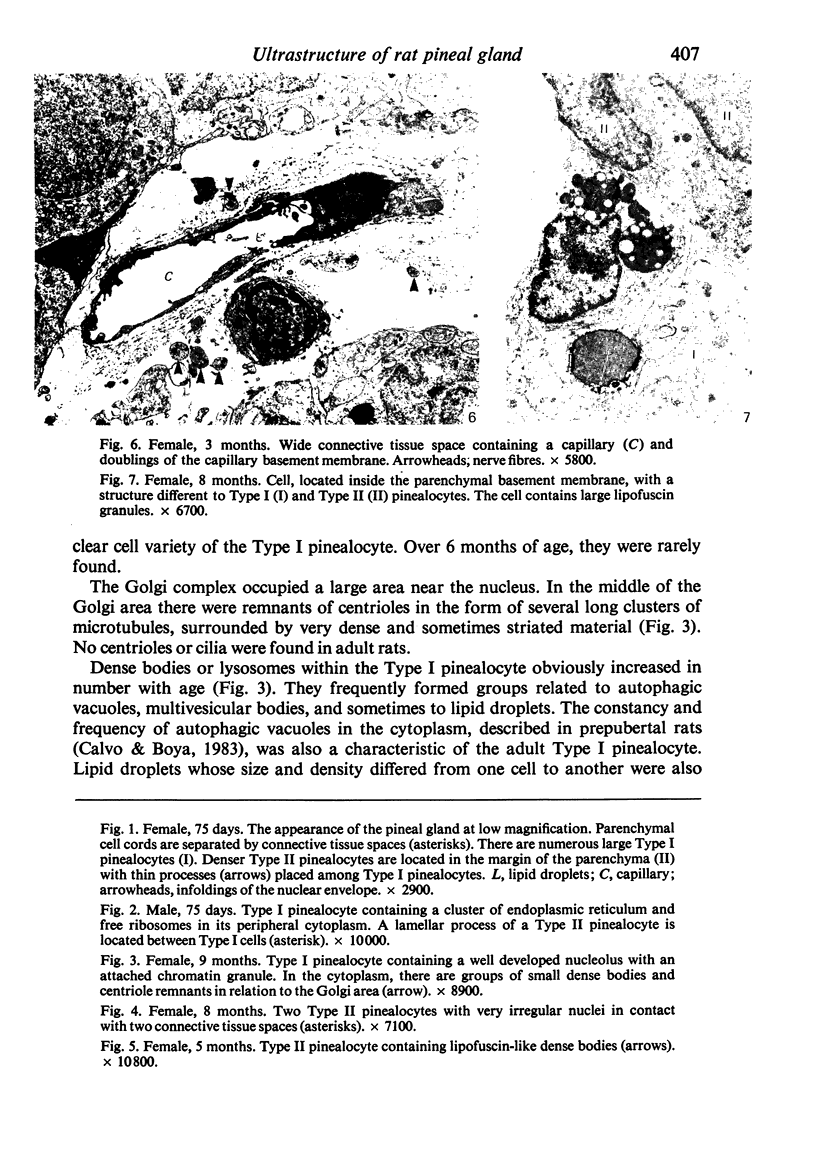
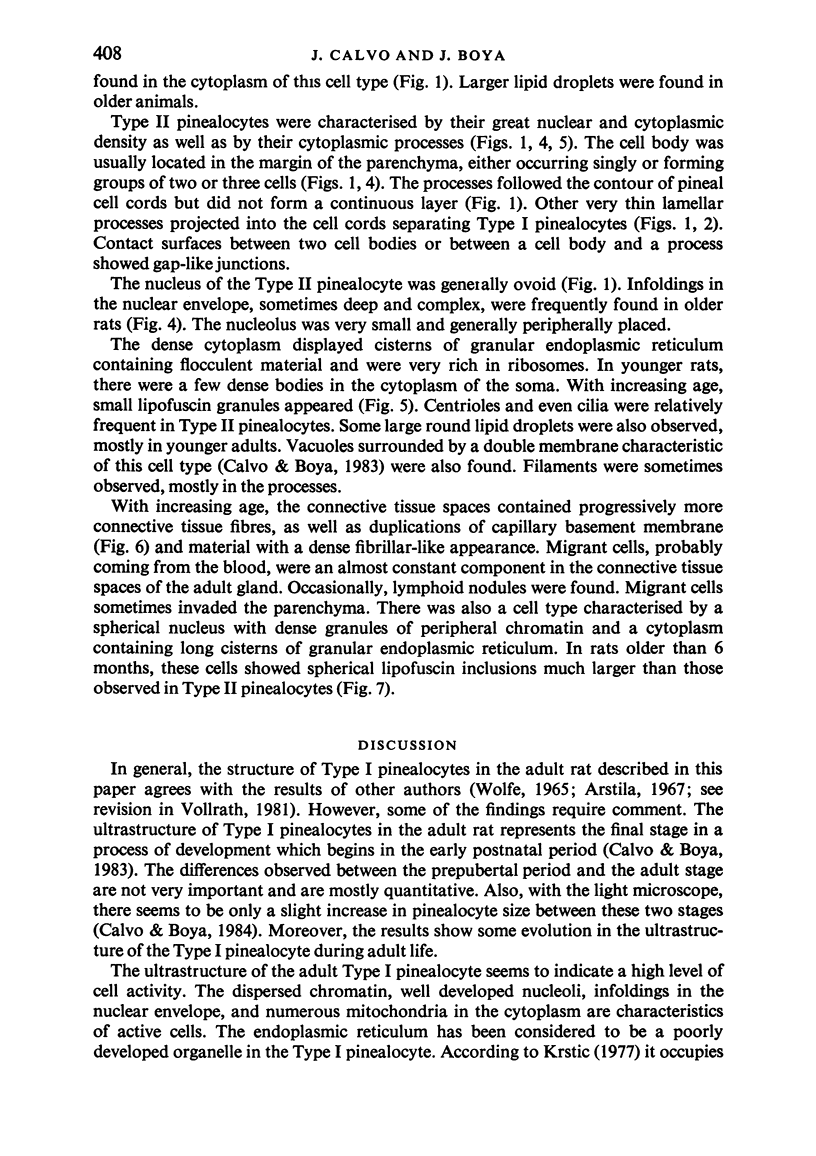
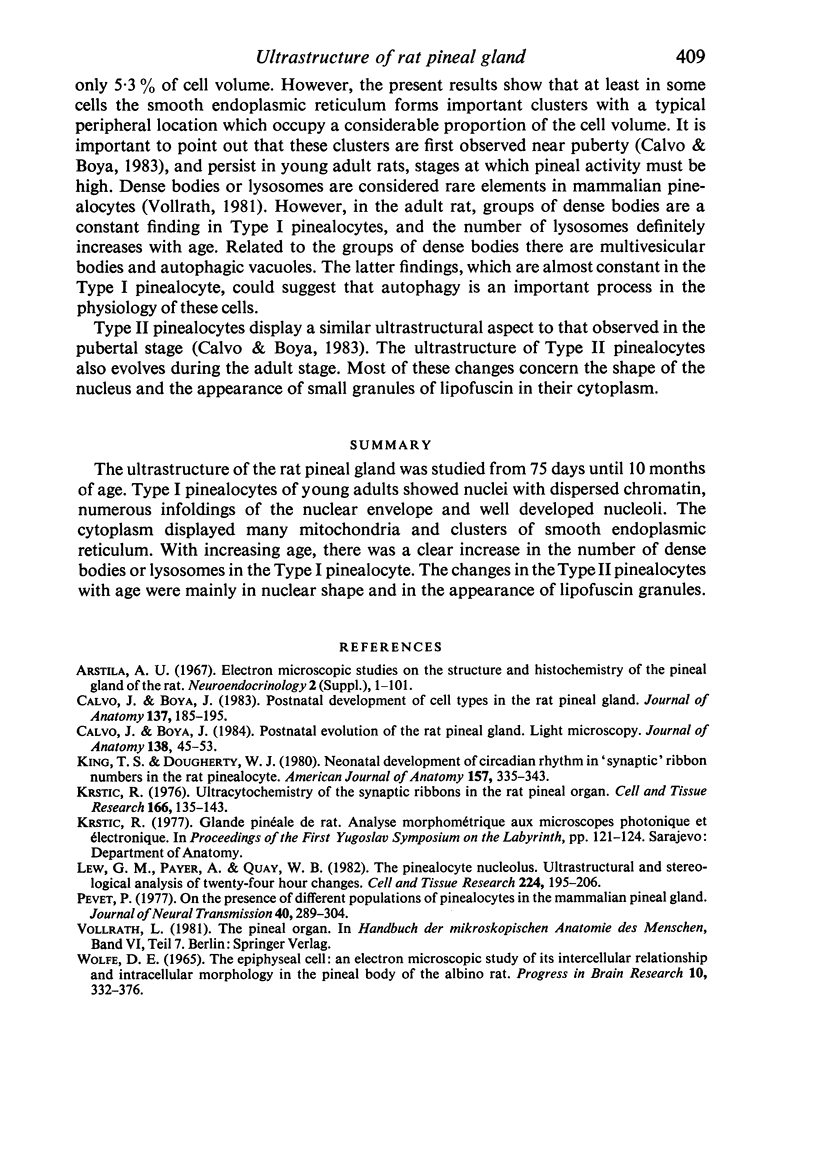
Images in this article
Selected References
These references are in PubMed. This may not be the complete list of references from this article.
- Calvo J., Boya J. Postnatal development of cell types in the rat pineal gland. J Anat. 1983 Aug;137(Pt 1):185–195. [PMC free article] [PubMed] [Google Scholar]
- Calvo J., Boya J. Postnatal evolution of the rat pineal gland: light microscopy. J Anat. 1984 Jan;138(Pt 1):45–53. [PMC free article] [PubMed] [Google Scholar]
- King T. S., Dougherty W. J. Neonatal development of circadian rhythm in "synaptic" ribbon numbers in the rat pinealocyte. Am J Anat. 1980 Apr;157(4):335–343. doi: 10.1002/aja.1001570403. [DOI] [PubMed] [Google Scholar]
- Krstíc R. Ultracytochemistry of the synaptic ribbons in the rat pineal organ. Cell Tissue Res. 1976 Feb 6;166(1):135–143. doi: 10.1007/BF00215133. [DOI] [PubMed] [Google Scholar]
- Lew G. M., Payer A., Quay W. B. The pinealocyte nucleolus. Ultrastructural and stereological analysis of twenty-four-hour changes. Cell Tissue Res. 1982;224(1):195–206. doi: 10.1007/BF00217279. [DOI] [PubMed] [Google Scholar]
- Pevet P. On the presence of different populations of pinealocytes in the mammalian pineal gland. J Neural Transm. 1977;40(4):289–304. doi: 10.1007/BF01257021. [DOI] [PubMed] [Google Scholar]
- WOLFE D. E. THE EPIPHYSEAL CELL: AN ELECTRON-MICROSCOPIC STUDY OF ITS INTERCELLULAR RELATIONSHIPS AND INTRACELLULAR MORPHOLOGY IN THE PINEAL BODY OF THE ALBINO RAT. Prog Brain Res. 1965;10:332–386. doi: 10.1016/s0079-6123(08)63460-3. [DOI] [PubMed] [Google Scholar]



